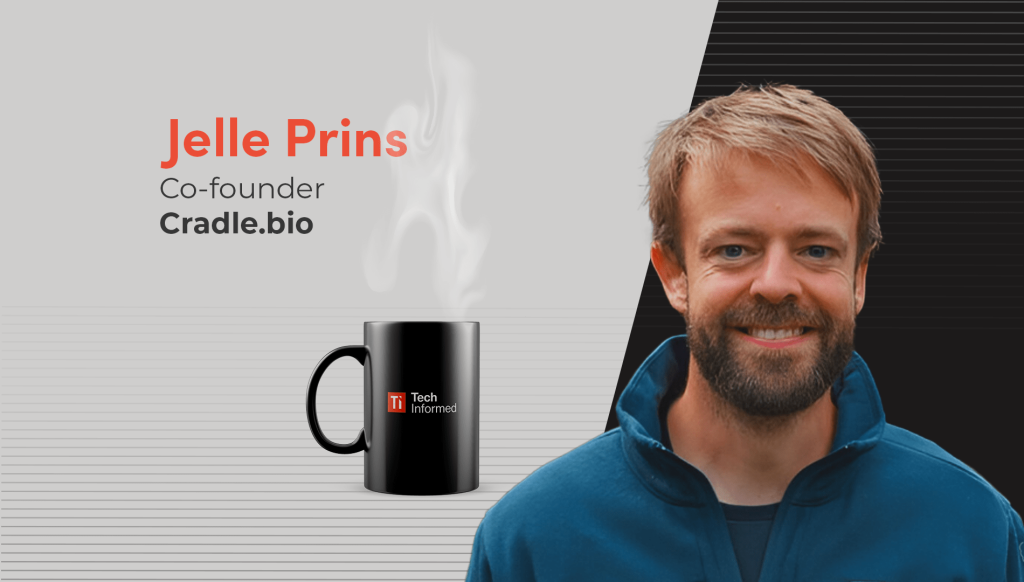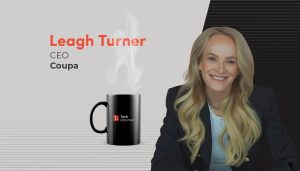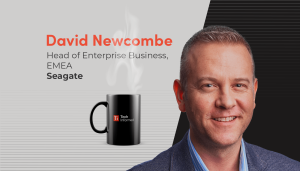

A coffee with… Jelle Prins, co-founder, Cradle.bio
When Jelle Prins joined Uber in 2009, it wasn’t yet a company — just an idea being pieced together in cafes and hotel lobbies. As one of the first employees in Europe, he helped build…
When Jelle Prins joined Uber in 2009, it wasn’t yet a company — just an idea being pieced together in cafes and hotel lobbies.
As one of the first employees in Europe, he helped build the ride-hailing platform’s infrastructure from scratch, left to launch a successful mobile agency (whose clients included Booking.com), then — following an acquisition—returned to Uber to help scale the ride hailing firm globally over a seven-year stint.
After the first wave of mobile innovation had passed, during the pandemic, Prins started to look to what might come next — and landed on artificial intelligence.
In 2021, he teamed up with long-time friend Stef van Grieken, a former GoogleX leader behind the company’s Tensor Processing Unit (TPU) chip development, to start something new. This led to the founding of Cradle.bio, a Swiss-Dutch biotech startup using large language models (LLMs) to accelerate protein design — the foundational process behind creating new drugs, enzymes, vaccines, and materials.
Working with co-founders Eli Bixby (formerly of Google Brain) and Harmen van Rossum (who runs their wet lab in Amsterdam), plus Elise de Reus (previously at Zymergen), the team has built Cradle with the goal of making it easier and faster for scientists to engineer proteins using intuitive, software-driven tools.
Fast forward to 2024, Cradle has raised a €100M to date (including a $73M Series B in November), grown to 70 people, and claims to have attracted pharma and biotech customers globally.
But Prins insists the ambition is just getting started: “We want to help reshape how biology is engineered — and make it possible for more people to solve some of the world’s hardest problems.”
When did you realise that protein design was a problem that AI could solve?
When Stef and I started exploring the intersection of AI and biology, we realised protein engineering was still largely trial and error. Proteins are like microscopic machines, made of chains of amino acids that fold into complex shapes.
That shape defines their function—whether breaking down sugar into alcohol or attacking a cancer cell. Traditionally, improving a protein involves mutating one amino acid at a time, testing it in a lab, and hoping for better performance. It’s slow, expensive and failure prone.
With AI, we can predict which mutations will have the desired effect before setting foot in the lab. Our models can cut experimental rounds from ten to two or three, making R&D both faster and cheaper.
You’ve described Cradle as “Photoshop for proteins.” What does that look like in practice?
It starts with a sequence—just a text file of 400 to 4,000 characters, each representing an amino acid. Our web-based platform lets scientists upload that file and set objectives: maybe they want the protein to bind more tightly to a target or be more stable at higher temperatures.

Jelle Prins describes cradle as “Photoshop for proteins”
The AI then generates many variants and predicts how they’ll behave. We help them select the most promising 96 candidates, which they synthesise and test in the lab. The results are fed back into our system to improve the next round. It’s iterative design but turbocharged by AI.
You’ve chosen language models over structure-based ones like AlphaFold. Why?
AlphaFold —DeepMind’s AI system that predicts a protein’s 3D structure from its amino acid sequence — is brilliant at what it does, but it doesn’t generate new designs.
So, we’ve been generating new designs the same way the language models work to predict the next word; we can use that tech to predict the next amino acid. A protein is represented by a whole bunch of characters so it’s an alien language, but it’s still a language so LLMs can be trained on this.
What’s the business model?
We’re a pure software play. We license the platform—our customers keep full ownership of the IP they generate. Whether it’s a pharma company designing a therapeutic antibody or an agri-tech firm engineering sustainable enzymes, Cradle is their design studio.
Are there specific use cases you’re especially excited about?
We’ve seen our platform used in vaccine development, diagnostics, and agriculture. One public example: a protein design competition hosted by Adaptyv, where the goal was to create an antibody targeting a cancer-associated protein. All of Cradle’s AI-designed variants outperformed the competition—130 teams in total.
How did you convince big pharma to adopt an AI-first approach to protein design?
It has gotten easier over time as more companies realise that AI is a fundamental shift. We can also show more of the real life results we have. If customers allow it, we will publish this on our blog. This convinces people at the pharma companies that this is a real technology that is going to make a real difference to the way they work and operate and the things they can achieve.
You’re working with some big players. Can you name any customers?
Most are still under wraps, but we’re working with top-tier pharma companies, as well as start-ups in food tech and industrial biotech. What I can say is that our software is already used across North America and Europe, and interest is growing fast.
Have you had to build any enterprise-specific features into the platform?
Absolutely. Security and compliance are core. We handle valuable IP, so we’ve brought in top talent—including a former security lead from Google—and implemented enterprise-grade audit trails, access controls, and compliance frameworks from day one.
You’ve spoken about wanting to work with certain kinds of people in a certain kind of culture. How so?
At Uber, values were codified a bit too late. Some of those early traits drove innovation, but they also contributed to well-publicised issues. At Cradle, we defined our cultural values from the outset: autonomy, responsibility, and mission alignment. Everyone owns their work. Everyone contributes to the culture. We even published a blog post outlining how we think about this—it’s a living document.
What were the early days at Uber like?
In 2009, smartphones weren’t widespread—many people still used BlackBerries—so we had to build everything from the ground up: how the app worked, how users understood the map and car location, how to handle payments, ratings, safety, and pick-up logistics. We focused on black cars due to regulatory ease, and it wasn’t until later, after Lyft gained traction, that Uber opened the platform to broader drivers.
Returning to Uber later—what changed?
It had become the rocket ship you read about – doubling in size every 5–6 months. I found it very exciting. It was organised in such a way where small teams had a lot of autonomy and therefore a lot of responsibility.
Uber whistleblower: “We were weaponising drivers”
Every team was given an inspiring mission. Every time that team grew beyond 15 people you would split it up and split that mission into two, so for instance, if Uber Eats was started then it would be: “let people order food by Uber ‘and if that team is split up one team might focus on the courier side and the other on the customer side.
How do you stay ahead of the next big shift?
I’ve passed on crypto and VR. They didn’t feel as impactful. But with AI, I had that same instinct I had in 2007 when the iPhone came out: this changes everything. Over the next five years, we’ll move from reactive chatbots to proactive AI—agents that don’t just answer questions but help you think, work and live better. It’s still early, but the shift is underway.
What do you do to relax?
Honestly, I don’t fully switch off. But when I’m with my kids, I try to be present. I leave my work phone with the addictive apps downstairs and use a clean device without Slack or email.
How do you take your coffee?
I don’t drink coffee. It’s almost all water or kombucha — fitting, I suppose, for a company working with proteins and fermentation!











